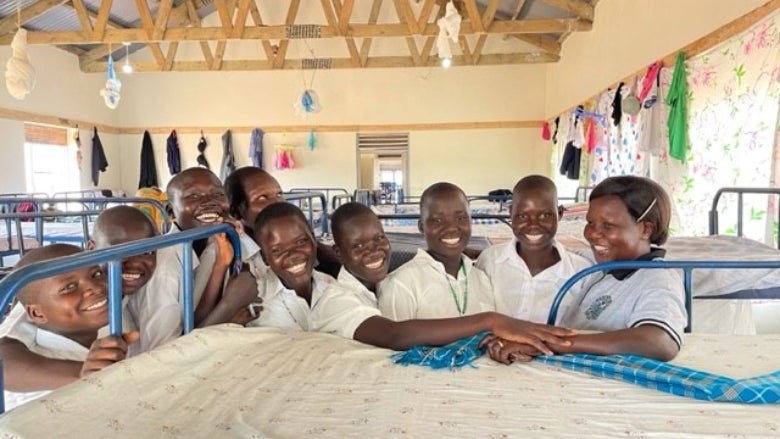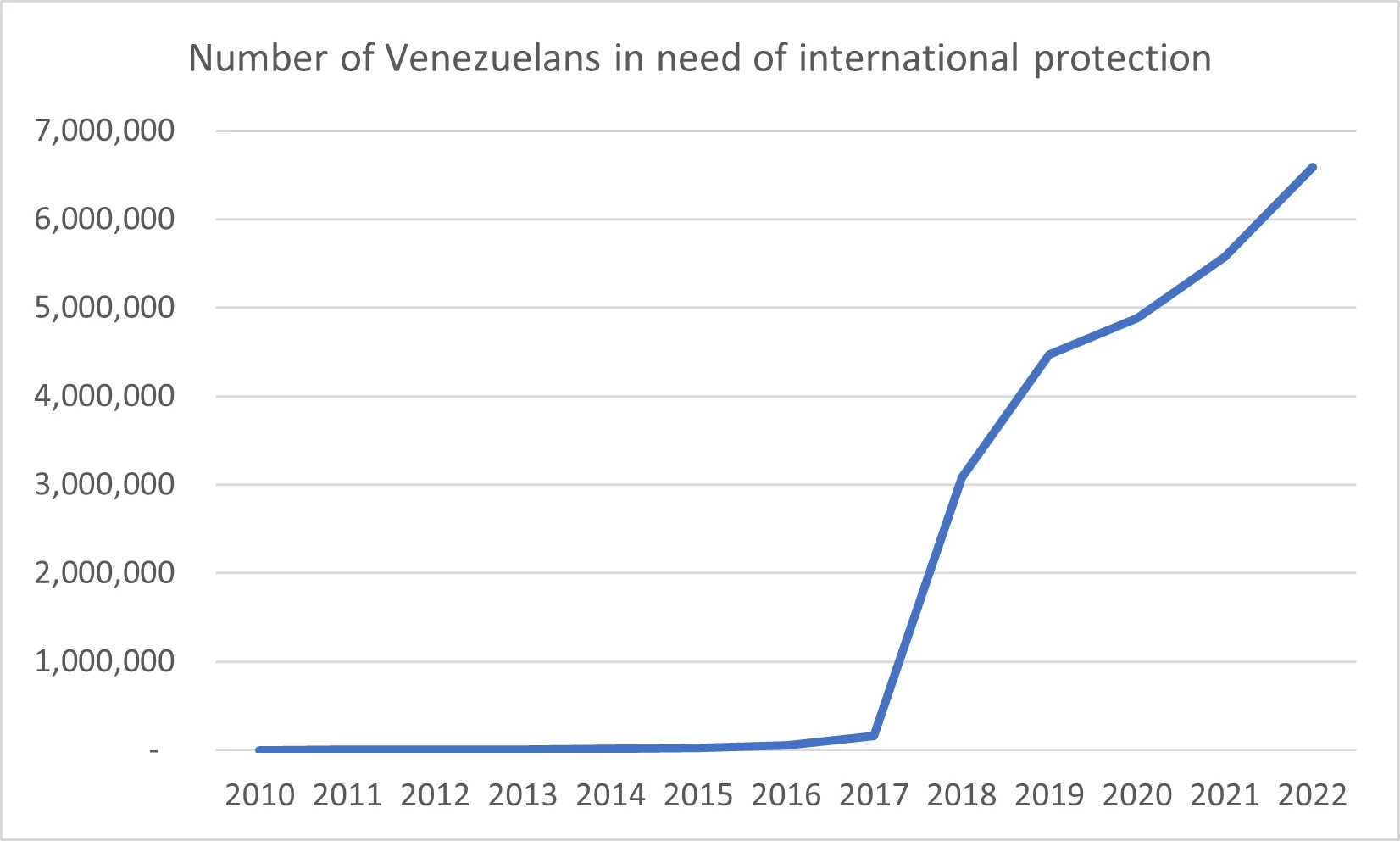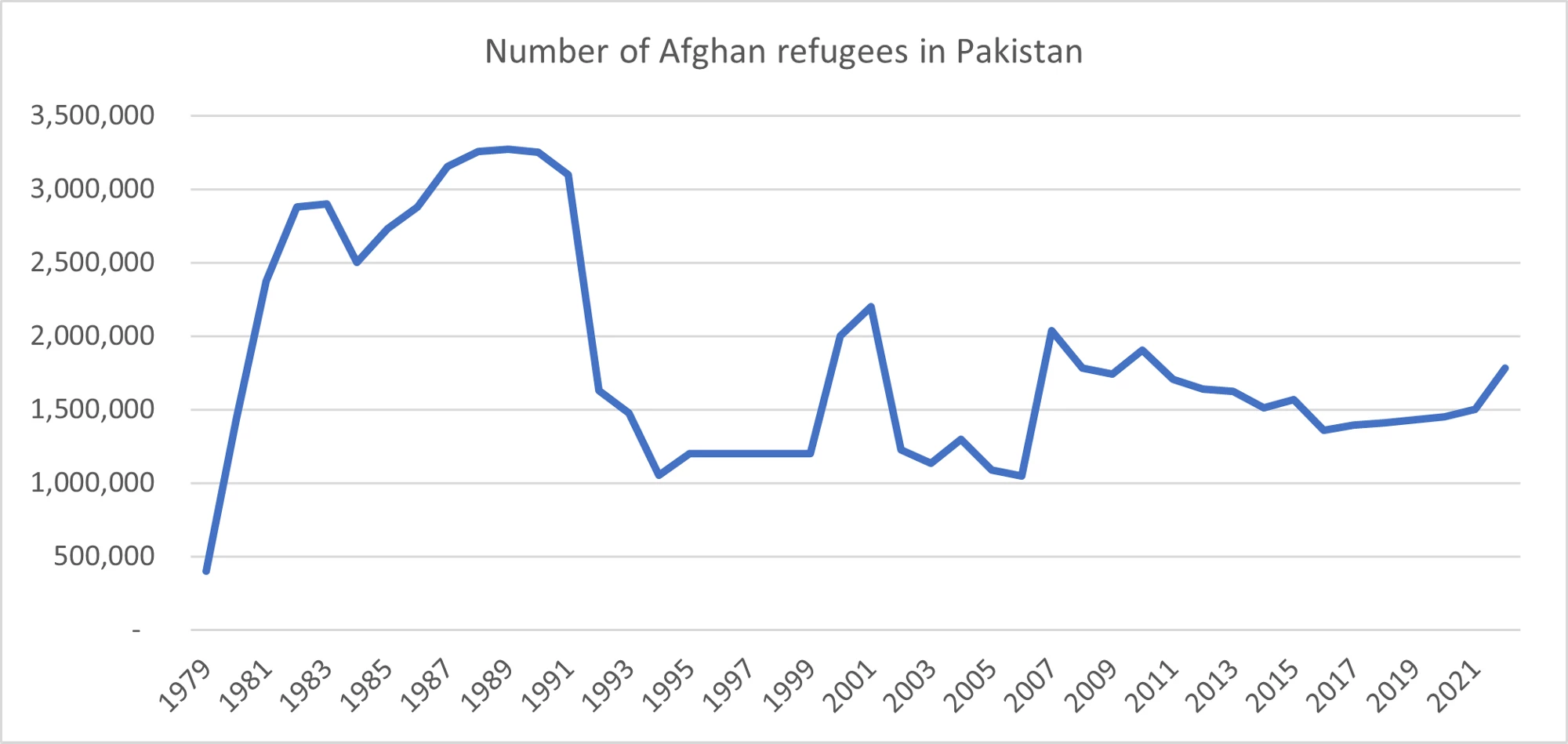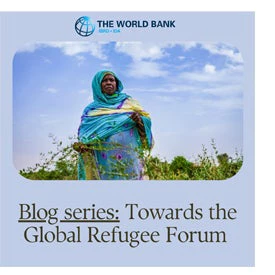 Children in Uganda at school dormitory
Children in Uganda at school dormitory
Refugee movements are often presented as “crises,” unforeseeable events that require emergency responses. Indeed, for Poland, the arrival of millions of Ukrainians in just a few weeks in 2022 was a once-in-75-year occurrence that few could have foreseen just a couple of weeks earlier.
But most refugee situations follow a pattern.
In some cases, the build-up is slow. Movements start with a trickle, but it does not take much to predict they will increase if the circumstances in the country of origin remain unchanged or worsen. For example, for five years the outflow of Venezuelans gradually built up before it rapidly accelerated after 2018 (see Figure 1).

In other cases, refugee movements follow ebbs and flows, reflecting the dynamics of fighting in the country of origin – the succession of intensified fighting and lulls that characterize many protracted conflicts. For hosting countries, it is difficult to predict the exact timing of the next wave of arrivals, but the risks are often clear. The case of Afghan refugees in Pakistan (see Figure 2) or Somali refugees in Kenya illustrate such patterns.
Finally, some countries are surrounded by situations of instability across their neighborhood. Take Chad: since 2002, 21 years ago, there have been 22 episodes where more than 10,000 refugees arrived in the country – from East, West, South, and North – including about 500,000 refugees from Sudan this year, according to UNHCR data. Or take Uganda, which has regularly received refugees from the Democratic Republic of Congo in the East and South Sudan in the North, year in year out. Or take Ethiopia. For these countries, receiving refugees is no longer a crisis, it is a chronic issue.

If some refugee movements can be predicted, what are the implications?
Of course, the best course of action is to engage in countries of origin to reduce the need for people to flee – diplomatic, security, or development actions that can help deal with the roots of fragility, conflict or violence and bring about stability and progress towards prosperity. Yet, while such efforts are sometimes successful, they not always are. When they fail, the challenge for hosting countries is to provide refugees with international protection in a manner that minimizes negative impacts on themselves. This is where a preparedness agenda becomes crucial.
Such an agenda can build on the experience in other areas. For example, natural disasters, where over the last couple of decades there has been a shift from response to preparedness: construction codes have been amended so that buildings would not collapse as easily, and emergency teams have been trained to rescue people faster when needed. Or food crises, where the experience of Ethiopia illustrates a similar shift: the Productive Safety Net Program finances public works in drought-affected regions, and it grows – or shrinks – based on where and when the drought is most severe.
What could a preparedness agenda look like for refugee shocks? For humanitarian actors, it is already underway: prepositioning food and non-food items close to the potential refugee situation, developing rosters of personnel who can be quickly mobilized, having systems in place to call for funds immediately after a crisis hits. Host governments and their development partners need to start thinking along similar lines – based on each country’s circumstances. Several steps can be taken before refugee flows materialize, such as:
- Adjusting rules for fiscal transfers from central to local levels of government – so that municipal and local authorities have rapid access to financing when their population increases, for example, to accommodate people, to collect the trash that is generated, to extend health and education services.
- Preparing to deploy civil servants and other public sector employees to receiving areas – so that such deployments can be smooth and immediate, for example, to immunize incoming populations.
- Planning for the accommodations of large numbers of people across the country – because once people have settled in a particular area, it is difficult to relocate them: there is an element of “path dependency” where the initial decision sticks. If the location is poorly chosen, social tensions and higher costs will ensue.
- Adopting hosting policies that can be sustained over time, both socially and financially – because most refugee situations last years, often decades.



Join the Conversation